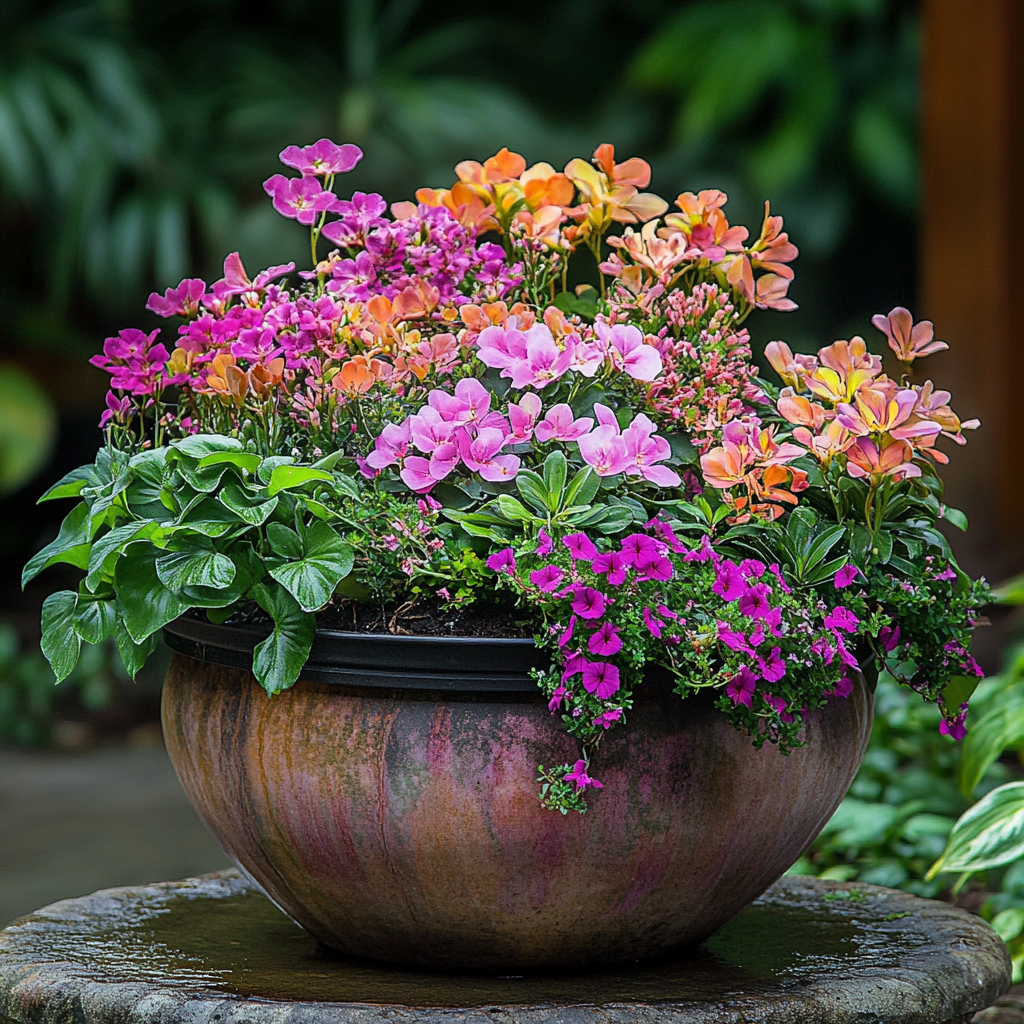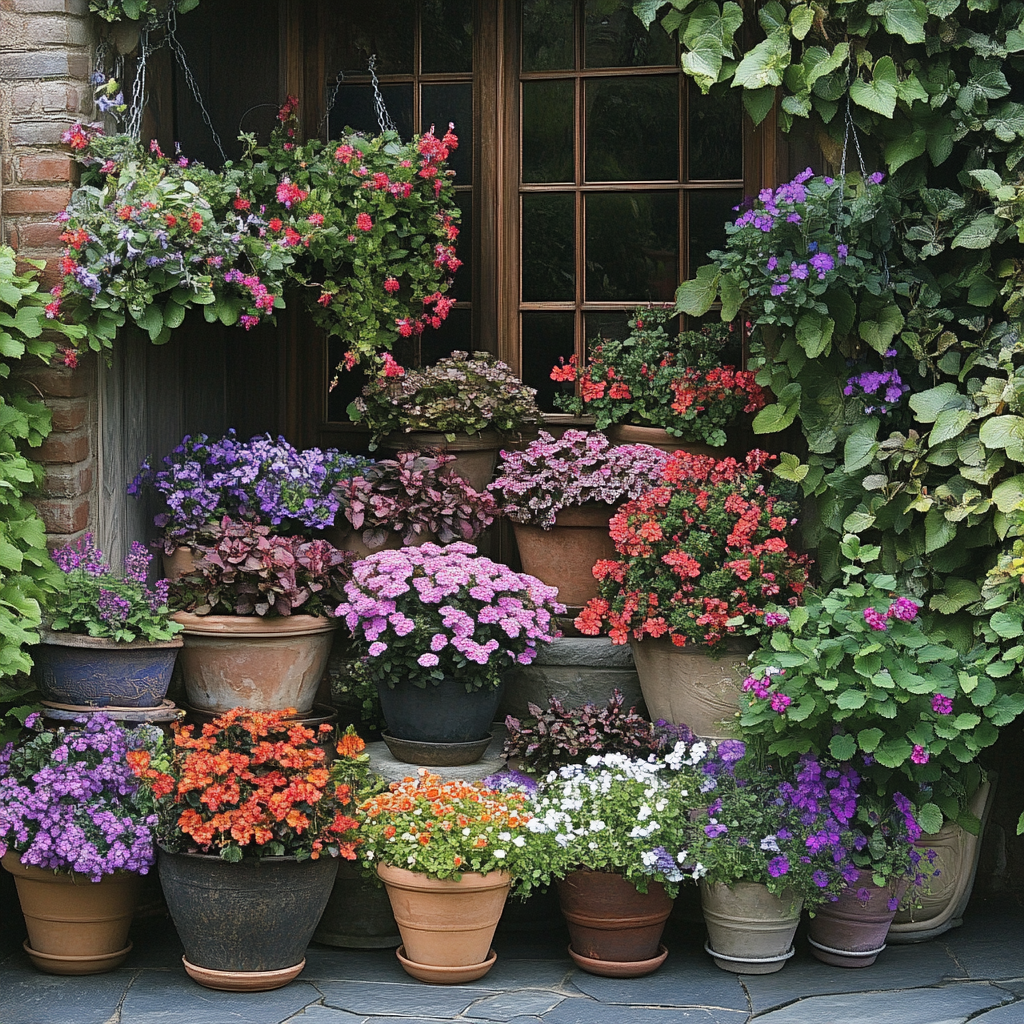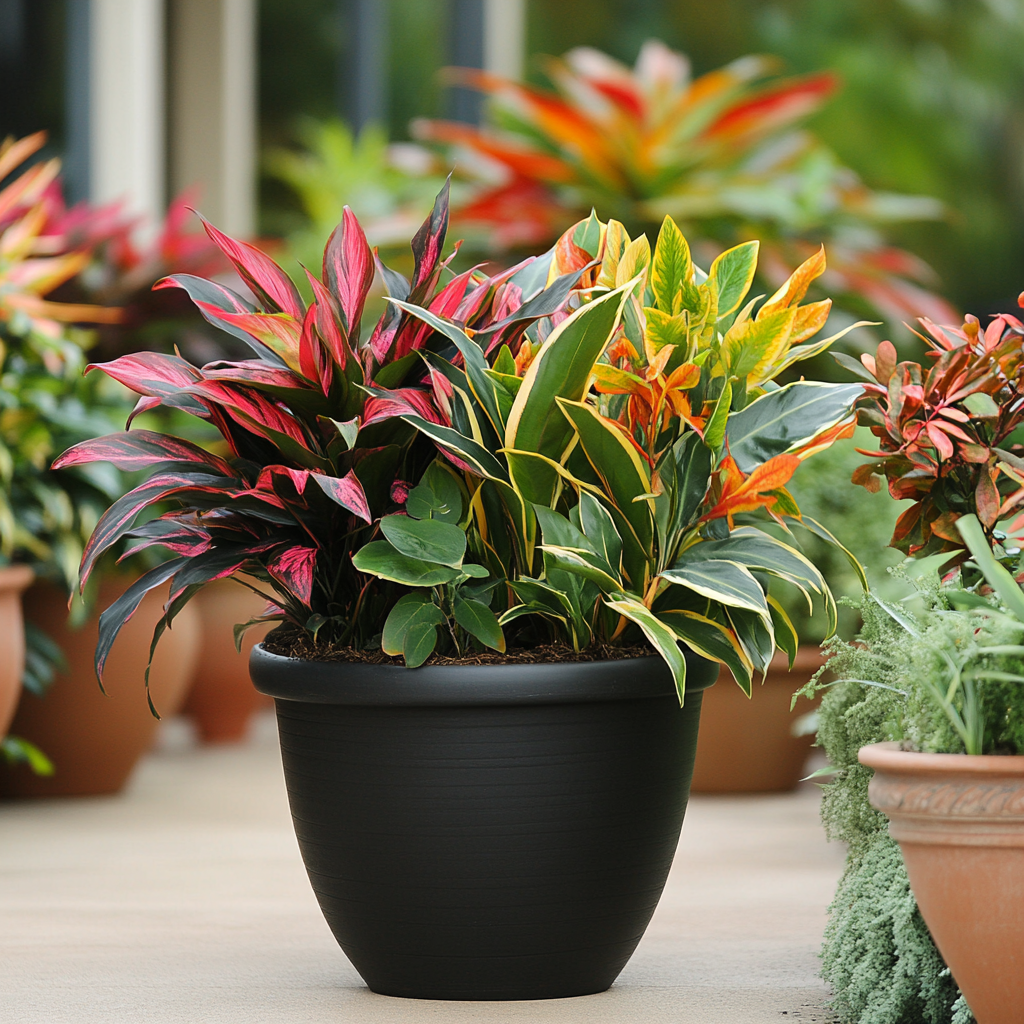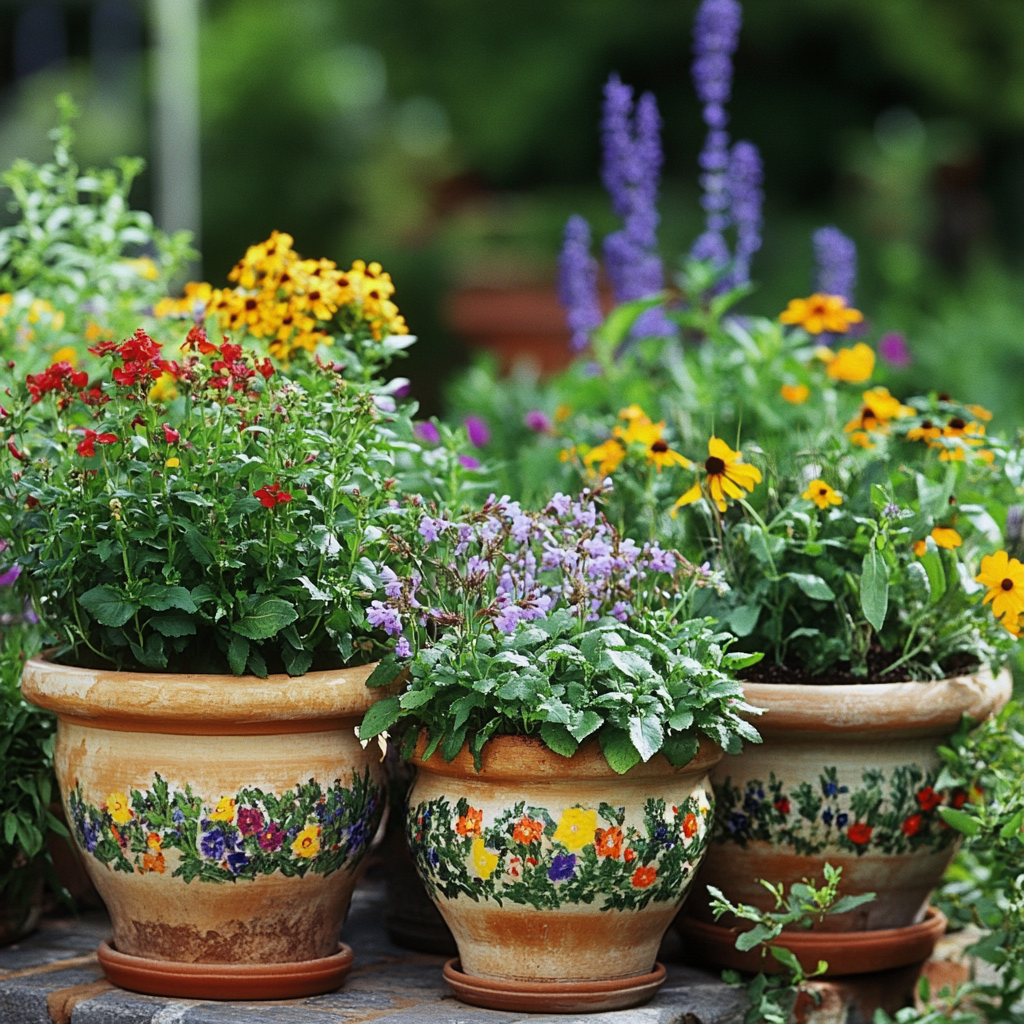Introduction
Container gardening is an ideal way to grow plants when you have limited space or poor soil quality. Whether you live in an apartment, a house with a small yard, or an urban environment, containers provide a versatile and efficient solution for gardening. With the right containers, soil, and plants, you can cultivate a thriving garden right on your patio, balcony, or windowsill. This guide will walk you through the basics of container gardening, helping beginners start their green thumb journey with ease. Let’s explore the essentials to create a successful and enjoyable container garden.
How to Choose the Right Containers
When starting with container gardening, the first thing you need to consider is choosing the right containers. Your selection will depend on the type of plants you want to grow. Ensure the containers have proper drainage holes to prevent waterlogging and root rot. Terracotta, ceramic, plastic, and wooden containers each have their pros and cons, such as moisture retention or insulation. Larger containers are better for bigger plants, while smaller pots work well for herbs, flowers, or compact vegetables. When choosing, consider factors like weight, mobility, and aesthetic appeal to ensure they suit your gardening space and lifestyle.
1. Selecting the Best Soil for Containers
Soil plays a vital role in container gardening, as it impacts plant growth and health. Regular garden soil is too heavy for containers, leading to poor drainage and compacted roots. Instead, opt for a high-quality potting mix designed for containers. Potting soil is light, well-draining, and provides the necessary nutrients for plants to thrive. You can also mix your own potting soil using peat moss, perlite, and compost for added nutrition. For specific plants, such as succulents or orchids, specialized soil mixtures are available. Remember to refresh the soil regularly to maintain its fertility and texture.

2. Choosing the Right Plants for Containers
When selecting plants for container gardening, it’s essential to match them to the container size, light exposure, and watering needs. For sunny spots, herbs like basil, thyme, and rosemary are perfect, while leafy greens like spinach or lettuce thrive in partial shade. Flowers such as petunias, marigolds, and pansies add color and charm to your container garden. For larger containers, you can grow tomatoes, peppers, or dwarf fruit trees, which thrive in ample space. Be sure to consider the plant’s growth habits—some plants like vines may require support, while others, such as succulents, need minimal care. Choose a combination of plants with similar needs to create a balanced and harmonious garden.

3. Planting Techniques for Success
Once you’ve selected your containers and plants, it’s time to plant! Begin by filling your container with soil, leaving about 1-2 inches from the top for watering space. Gently remove the plant from its nursery pot and loosen the roots if they’re tightly bound. Place the plant in the center of the container, ensuring the root ball is level with the soil surface. Fill around the plant with more potting mix, pressing gently to eliminate air pockets. After planting, water thoroughly and allow the soil to settle before adding more soil if needed. Don’t overcrowd your containers—plants need room to grow, so be mindful of spacing and consider plant maturity.

4. Watering Your Container Garden
Proper watering is one of the most critical aspects of container gardening. Because containers dry out faster than ground soil, it’s essential to check moisture levels regularly. Water thoroughly until it drains out of the bottom, ensuring that the roots get enough hydration. Be sure to adjust your watering schedule based on the weather—during hot or windy days, plants may need more water. On cooler, rainy days, watering may be less frequent. A good rule of thumb is to water in the morning, allowing the soil to dry out by evening to prevent mold growth. Consider using self-watering containers or drip irrigation systems for easier maintenance.

5. Fertilizing Your Container Plants
Container plants rely on you to provide the necessary nutrients since they have limited access to soil resources. Fertilizing is crucial for healthy growth. Use a balanced liquid fertilizer, slow-release granules, or organic compost to feed your plants. When fertilizing, follow the manufacturer’s instructions carefully to avoid overfeeding. Plants in containers may need more frequent feeding compared to those grown in the ground because nutrients get depleted quickly in pots. Fertilizing during the growing season, especially in spring and summer, promotes lush growth and blooming. Additionally, regularly check your plants for signs of nutrient deficiencies, such as yellowing leaves or stunted growth.

6. Container Placement for Optimal Growth
The location of your container garden is key to its success. Different plants require different amounts of sunlight—some prefer full sun, while others thrive in partial or full shade. Ensure that your containers are placed where they’ll receive the right amount of light for their specific needs. If you’re growing vegetables, ensure they get at least 6-8 hours of sunlight per day. For flowering plants, choose spots that highlight their colors while still meeting their light requirements. Consider the microclimate of your space: balconies may be warmer and sunnier than shaded areas under trees, so tailor your plant placement accordingly.

7. Pruning and Deadheading for Healthier Plants
Regular pruning and deadheading are important tasks to maintain a healthy and attractive container garden. Deadheading refers to removing spent flowers to encourage new blooms and prevent the plant from putting energy into seed production. Pruning involves cutting back overgrown or damaged branches to promote better airflow and encourage new growth. Trim any yellowing or wilting leaves to keep the plant looking fresh. For some plants, regular pruning also helps control size, ensuring they don’t outgrow the container. Always use clean, sharp tools to avoid damaging the plant and to reduce the risk of disease transmission.

8. Dealing with Pests and Diseases
While container gardening can reduce the risk of soil-borne pests and diseases, it’s still important to stay vigilant. Keep an eye out for common pests like aphids, spider mites, and whiteflies. Organic insecticidal soap or neem oil can be used to treat most infestations. If you notice wilting, yellowing, or spots on the leaves, check for signs of disease, such as fungal infections or root rot. Avoid overwatering, as stagnant moisture can contribute to fungal growth. To prevent pests, regularly inspect your plants, remove any dead leaves, and practice good hygiene by cleaning your containers and tools.

9. Seasonal Care and Rotation
One of the great things about container gardening is that it allows for flexibility and seasonal planting. As the seasons change, you can rotate plants to ensure they thrive in their best conditions. In colder months, consider moving plants indoors or using cold frames or plant covers to protect them from frost. During warmer months, switch out cold-weather crops like lettuce with heat-loving vegetables such as tomatoes or peppers. Seasonal care also includes repotting plants when they outgrow their containers. Repotting ensures that plants have enough room to expand their roots and continue growing strong. It’s an excellent way to refresh your container garden each year.

10. Decorating Your Container Garden
Container gardening offers endless opportunities for creativity. Decorative pots and containers can enhance the aesthetic appeal of your garden. Choose containers in various colors, shapes, and sizes to create visual interest. Incorporate elements like pebbles, decorative rocks, or fairy lights around the plants to add a personal touch. You can also mix and match plants with complementary textures and colors to create a vibrant and cohesive look. Consider adding herbs or flowers that attract pollinators like bees and butterflies, adding beauty and functionality to your garden.

Final Gardening Tips
✔ Start small – Begin with a few plants and gradually expand your container garden as you gain experience.
✔ Group plants with similar needs – Choose plants that require the same amount of sunlight, water, and nutrients.
✔ Consider container mobility – Select lightweight containers if you need to move them for better sunlight or protection.
✔ Rotate crops – Rotate the plants in your containers to ensure healthy growth and avoid nutrient depletion.
Conclusion
Container gardening is an excellent way for beginners to get started with gardening, even in the smallest of spaces. By choosing the right containers, soil, and plants, you can create a flourishing garden that brings beauty and fresh produce into your life. With a little attention and care, your container garden will thrive and provide enjoyment throughout the seasons. Happy gardening! 🌱